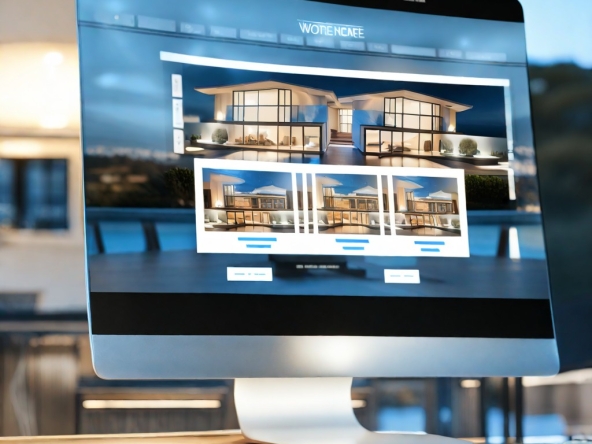In today’s competitive market, real estate companies need more than just numbers and professionalism to stand out. They must establish a strong brand that connects with buyers on a personal level. This involves identifying their target audience, building trust, and creating a bridge between buyers and sellers.
What Is Real Estate Branding?
Real estate branding is the strategy companies use to define their identity, connect with audiences, and differentiate themselves from competitors. Unlike the past, where companies preferred to remain generic, the modern real estate market demands a unique and compelling brand presence.
Key Components of Real Estate Branding:
- Core Messaging: Develop a clear and consistent message that resonates with your target audience.
- Tone of Voice: Establish a tone that reflects your brand’s personality and values.
- Visual Identity: Create a cohesive visual identity, including logos, color schemes, and design elements.
- Promotional Materials: Ensure all marketing materials align with your brand’s identity and message.
Practical Steps to Real Estate Branding
1. Identify Your Target Audience
Understanding who your ideal buyers are is crucial. Conduct market research to identify their preferences, needs, and behaviors. This will help you tailor your branding efforts to effectively reach and engage them.
2. Define Your Brand Identity
Create a brand identity that reflects your company’s values and mission. This includes designing a logo, choosing brand colors, and developing a tone of voice that speaks directly to your target audience.
3. Develop a Strong Brand Narrative
Craft a compelling story that highlights what makes your properties unique. Your narrative should evoke emotions and connect with your audience on a personal level. Make sure this story is consistently communicated across all platforms.
4. Design Cohesive Marketing Materials
From your website to brochures and social media campaigns, ensure all materials are visually cohesive and align with your brand identity. The establishment of a trustworthy and recognizable brand is contingent upon the maintenance of consistency.
5. Utilize Digital Marketing
Leverage digital marketing strategies to increase your brand’s visibility. This includes SEO, content marketing, social media marketing, and email campaigns. Use these platforms to share your brand narrative and engage with your audience.
6. Measure and Refine
Continuously monitor the performance of your branding efforts. Use analytics to track engagement, conversions, and overall brand awareness. Based on the data, refine your strategies to improve effectiveness and reach.
Case Study Example
Discovery Land Co.
Discovery Land Co. showcases how real estate branding can transform a company’s market presence. By creating a luxurious and exclusive brand identity, they appeal to wealthy baby boomers. Their marketing emphasizes family values and quality time, which resonates deeply with their target audience.
Get Expert Help with Real Estate Branding
Creating a successful real estate brand requires time, effort, and strategic planning. If you need assistance, Ankhil Stelios can help. Visit the Ankhil Stelios brand design page to learn more about real estate business analysis, strategy, and positioning to unlock the full potential of your property developments.
Conclusion
Building a strong real estate brand is essential in today’s market. By following these practical steps, you can create a brand that not only stands out but also connects deeply with your target audience. Ready to elevate your brand? Get started now and watch your business thrive.



